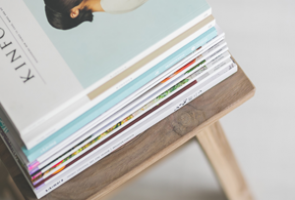Whether your business was born on the web or you have been working hard to transition your brick-and-mortar business into a successful online enterprise, the power of print is still worth considering.
This article is for people in both groups. I hope that I can help those who have already gotten their feet wet with print ads make them more effective. I also hope that if you haven’t moved into print ad space as of yet, the tips and secrets that follow will help you make your first print ad campaign (and numerous subsequent ones) a success. With that, here is my list of the most vital elements to any print ad campaign.
#1 – Maintain Well-Aligned Branding
Consistency is a key element of successful branding. The best branding in print ads is that which can be seen or recognized from a distance or at a first glance. When you develop print ads – whether they are going to run in newspapers and periodicals or if they come in the form of fliers, brochures, and business cards – they have to look like your brand. The brand message in your print ads needs to be consistent with all of your other advertising from colors to fonts to use of logos.
#2 – Go for an Immersive Design
You want people to feel like they are part of the ad. You accomplish this by playing heavily to their senses. The visuals have to evoke feelings that go beyond just the eyes. They need to feel, see, smell, hear, and taste the message in your ads. You can enhance the experience by including headlines or captions that invite the viewer to have specific sensual responses to the ad. Think of them as calls to action regarding how you expect them to react. Here’s an example…
Suppose you were trying to sell gourmet coffee. Gourmet coffee is warm. When does a warm beverage taste the best? When it’s cold where you are or you can see that it’s cold outside. You can convey the concept of warmth and comfort against a contrasting winter scene with a caption like, “It’s settled. We’re staying in tonight.” The message there is that the product is soothing. It counterbalances the negative feeling of cold air on your face. Forget that it’s cold outside. In here, it’s warm and toasty and we have great coffee. What else do we need, right?
#3 – Employ Interactive Elements
I like this video from Motorola because I think it showcases the pinnacle of the interactive print ad. It is also most assuredly very expensive to produce. Even if you don’t have a Motorola-sized budget, this is an instance where you can give the viewer something to really draw him or her in. An interactive print ad can be something as simple as an infographic or flow chart. You can also incorporate QR or similar technology to make the interactive part of the ad scannable and accessible via smartphone. The possibilities here are endless, and they don’t have to be expensive or fancy. All they need to do is engage.
#4 – Involve Your Buyer Persona or Ideal Avatar
If your company has an ideal avatar, why not make him, her, or them part of your print ad strategy? You should already know enough about this person’s (or people’s) lifestyle and looks to be able to construct a good visual. That kind of visual is sure to appeal to your target audience if you’ve gotten the avatar correct in the first place. By the time you get to this part of the process, I’m assuming that you’ve determined already that you have.
Feature your ideal avatar prominently in print ads, either by face or by message. Use language that pushes buttons and employ visuals to which he, she, or they are most likely to respond. If you have developed the right persona for your business, you will likely have an unstoppable print ad on your hands.
#5 – Go Heavy on the Visuals, Light on the Text
It’s not just an old hackneyed cliché – a picture really is worth a thousand words. That is mostly because a picture will get people’s attention much faster and hold it for much longer. Knowing this is half the battle with print ads. The right visuals can mean the difference between someone taking your flier when you hand it to them and deciding immediately that they’re not interested. If you want to avoid the latter, lead your message with pictures and keep the words to a minimum.
A Last Word on Print Ads
Make no mistake – print is still a powerful advertising medium. No matter how you choose to use it, do so to your greatest possible advantage. The five elements to my print ad checklist will have you well on your way. Still need help? My team of custom writing professionals can help you make the most out of the words you do use (and yes, you will need some well-written copy to complement the visuals – if one part of that equation falls flat, so will the other), and we welcome the opportunity!
